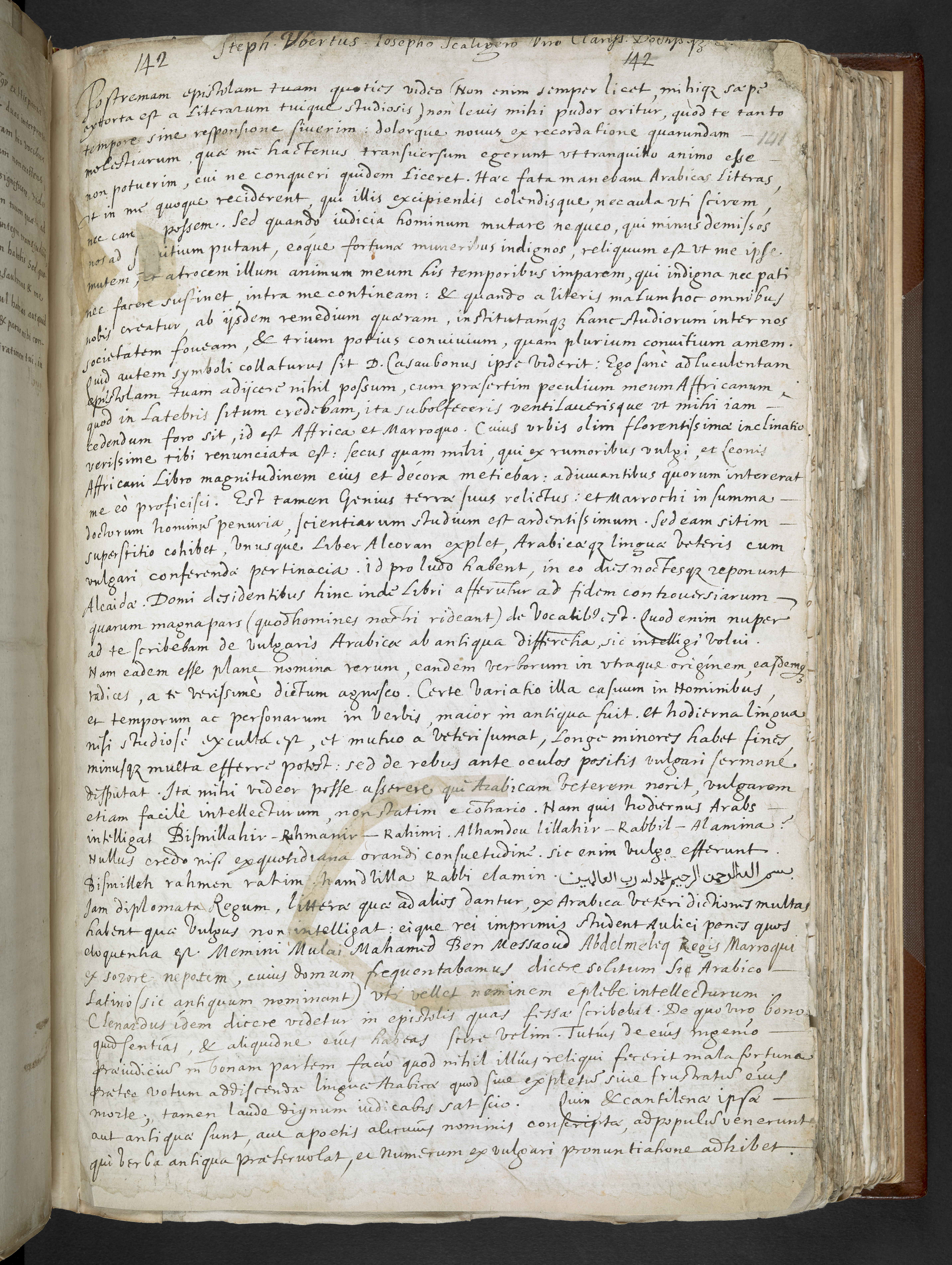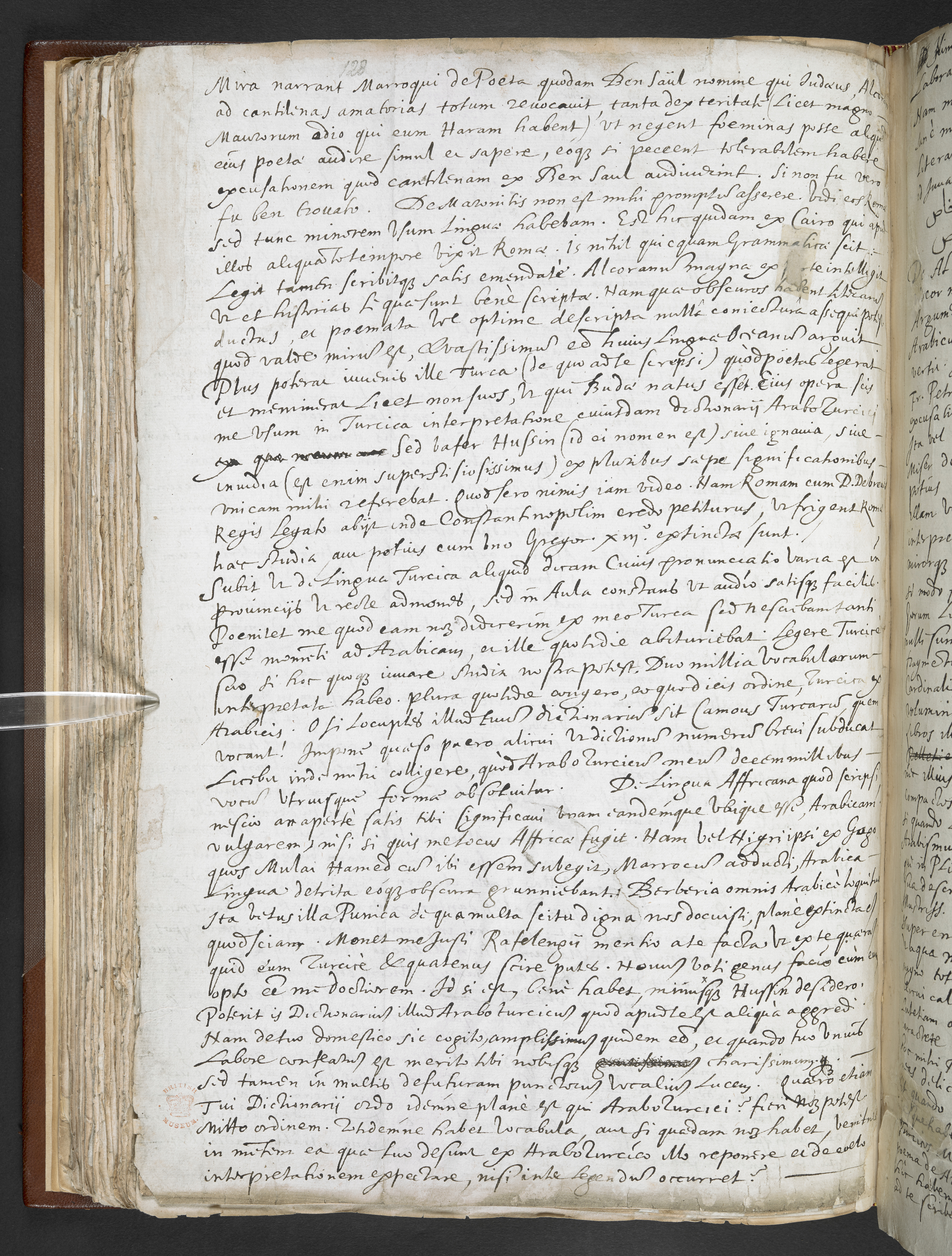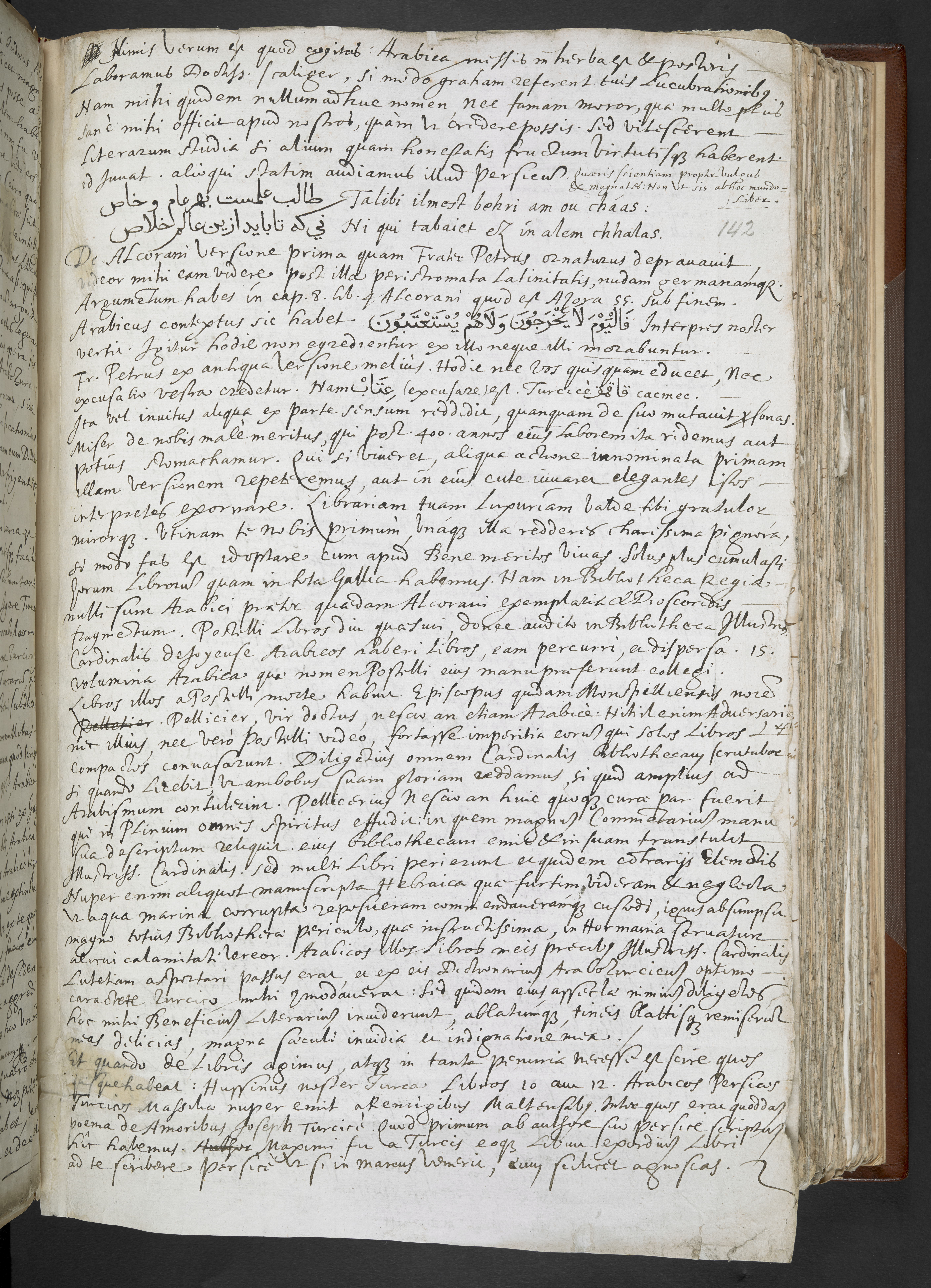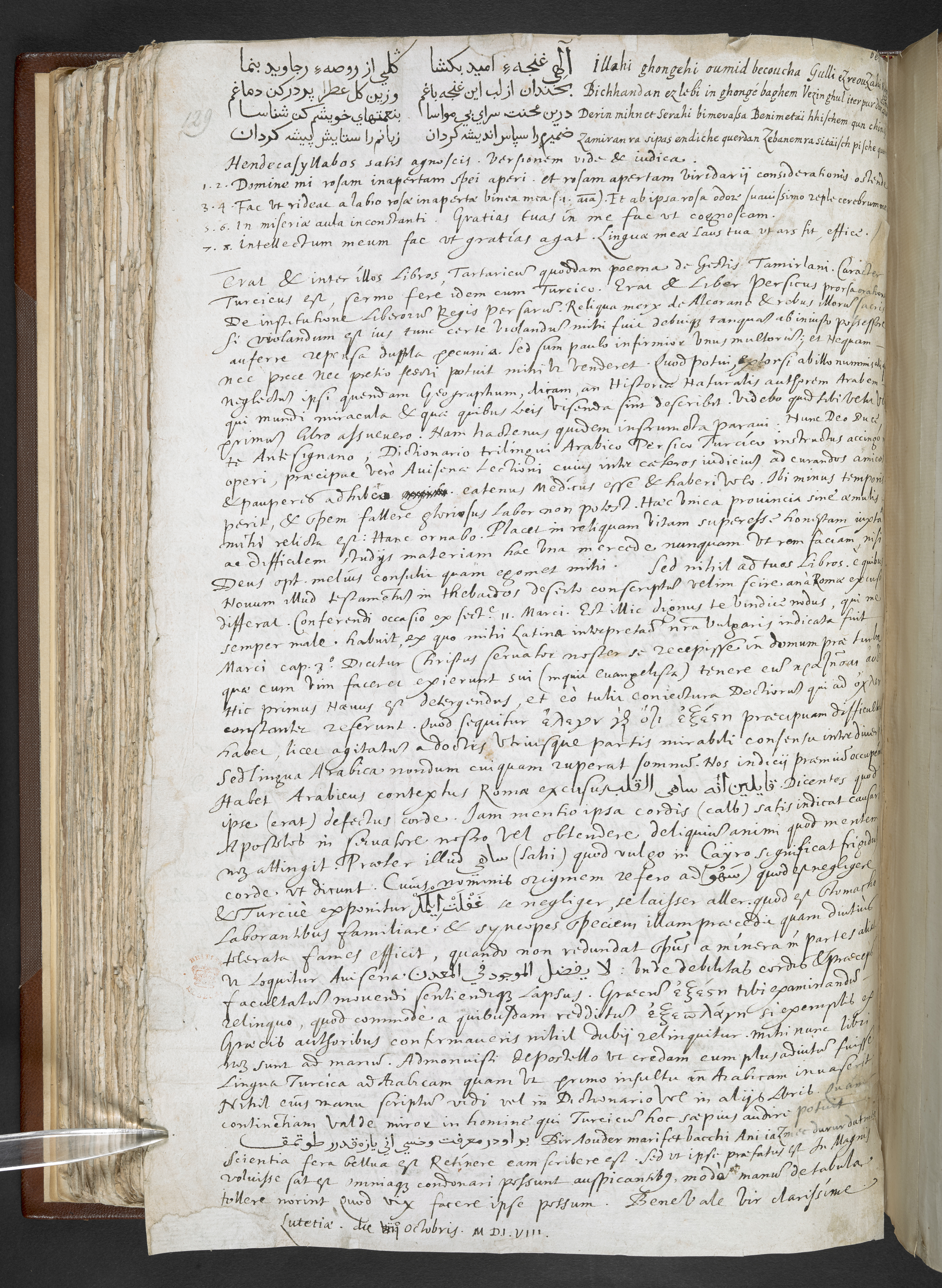by Nil Palabiyik
Scholarly collaboration is important. It was as important in the seventeenth century as it is now. This blog post is about how I deciphered, almost by sheer coincidence, an arcane reference in an early modern letter and determined the source text of a manuscript with the help of a Biblia Arabica project member during an informal teatime gathering in our friendly Institute kitchen. Vevian Zaki, a team member of the Biblia Arabica, studies the different versions of the Pauline Epistles, while I investigate the role of Ottoman scholarship in early modern European Orientalism for my Alexander von Humboldt Foundation-funded postdoctoral research project ‘Learning Turkish in Early Modern Europe, 1544–1680’. Our seemingly disparate research projects, as we discovered, have much more in common than first meets the eye, and sharing random ideas and early findings pays off.
Biblical scholarship in Renaissance Europe stretched beyond Hebrew and Greek texts. Early translations of the Bible into languages such as Arabic and Syriac were highly valued by scholars, especially the newly emerging group of Orientalists. Some scholars such as Guillaume Postel, who contemplated printing the Bible in Arabic and having it translated into Turkish, travelled to the Ottoman Empire to secure ancient manuscripts for this purpose.


On 8 October 1608, Étienne Hubert, a renowned Arabist who taught at the Collège Royal in Paris, sent to the humanist scholar Joseph Scaliger in Leiden a letter seeking his opinion on the meaning of a biblical verse. Hubert was baffled by the verse that he encountered in Raimondi’s 1590 Rome edition of the Four Gospels in Arabic printed at the Medici press. He requested that Scaliger compared the same passage to the one contained
in his manuscript of the Arabic Gospels. This manuscript, now Leiden, University Library, Or. 217, was mentioned in an earlier letter from Scaliger. According to Scaliger’s description, it was produced in the Thebaid region of Egypt in the previous century. The details regarding the date and the provenance that were known to the two scholars are not available in any of the Leiden catalogues today. To Hubert and Scaliger, this codex was not an ancient artifact but a volume that transmitted a living, breathing text for the Arabic-speaking Christian communities. Thomas Erpenius later used the same manuscript for his edition of the New Testament published in Leiden in 1616.
The passage in question was Mark 3:21, a verse describing Jesus’s ‘family’ accusing him of going ‘mad’. The grammatically ambiguous text of the Greek original still puzzles biblical scholars as to whether the people who had gone out to ‘seize’ Jesus were his ‘family’, ‘friends’, ‘disciples’ or ‘relatives’. Another point of disagreement is the translation of the Greek word ἐξέστη in this context. It has been over 400 years since Hubert solicited Scaliger’s explication with regard to this word, but New Testament criticism still has not found the answer to the question of whether it means ‘he has gone mad’, ‘he is insane’, ‘he is beside himself’ or, as recently suggested, ‘he has amazed [us]’.
The Arabic version of the verse, as printed in the 1590 Rome edition, is equally perplexing. There Jesus’s mental state is described as suffering from a ‘deficient heart’. Hubert remembered that the word (sāhi) used here to describe the heart (al-qalb) meant ‘cold of heart’ in the common Cairo parlance. Seeking a more learned refrence, he immediately checked his Arabic-Turkish-French dictionary, a volume he compiled from Ottoman sources, which is now Paris, Bibliothèque Nationale, 4348. The source dictionary supplies ‘ġaflet eylemek (to be ignorant of)’ as the Turkish equivalent of sāhi. Yet Hubert mistakenly translates this as ‘se negliger, se laisser aller (to neglect oneself)’. It was not out of the ordinary, at all, that Hubert read his edition of the Arabic Gospels with the help of a Turkish dictionary. It is evident from the marginal notes in Hubert’s surviving printed books and manuscripts, especially his copy of the Rome edition of Avicenna’s Canon of Medicine (al-Qānūn fī al-Ṭibb), that his Arabic-Turkish dictionary was the main lexicographic source he employed when reading Arabic texts. Using a reference tool essentially intended for native-speakers of Turkish without a strong command of that language reaped little benefit, even for a gifted linguist such as Hubert who could count Isaac Casaubon and Thomas Erpenius among his students. He lamented the fact that he had nobody in Paris to help him decipher the Turkish in the Arabic-Turkish dictionary. Having come to a dead end with his limited pool of reference tools, he sought another solution.
Hubert wondered whether an alternative translation of Mark 3:21 was given in the manuscript that belonged to Scaliger. Scaliger was already in ill health when he received the letter and passed away a few months later. Therefore Hubert never got an answer to his query. Had Scaliger indeed checked the manuscript against the Rome edition, he would have noticed that the text of the edition follows that of the manuscript copy. This still would not have explained why the edition and the manuscript follow the same strange wording, which does not agree with the Greek.


We will have to turn to the Biblia Arabica project for an answer. The research group has been working on classifying different versions of the Arabic Bible including the Pentateuch, the Book of Daniel, the Gospels, and The Pauline Epistles translated from Greek, Syriac, Coptic and Latin. During our short conversation over tea, Vevian noticed that the Arabic translation was not made from Greek but from Syriac since it followed the Peshitta (the most popular Syriac version) of the New Testament.
While the meaning of Mark 3:21 still remains problematic, we now know more about the Arabic version of the Gospels that Hubert and Scaliger read and commented on. Moreover, this exchange between the two is the only known occasion of a contemporary mention of the Thebaid manuscript.
For more on the letter from Hubert to Scaliger and the texts discussed therein, see my recent article ‘The Last Letter from Étienne Hubert to Joseph Scaliger: Oriental Languages and Scholarly Collaboration in Seventeenth-Century Europe’, Lias: Journal of Early Modern Intellectual Culture and its Sources 45.1 (2018): 115–146. https://doi.org/10.2143/LIAS.45.1.3285541
Dr Nil Palabiyik is Fellow of the Alexander von Humboldt Foundation at the Institute of Near and Middle Eastern Studies at LMU Munich. She was formerly a British Academy Postdoctoral Fellow at the John Rylands Research Institute, University of Manchester. She has also held visiting fellowships at the Scaliger Institute, University of Leiden and the Herzog-August-Bibliothek Wolfenbüttel.
Suggested Citation: Nil Palabiyik, “Oriental Languages and Scholarly Collaboration in Seventeenth-Century Europe: Étienne Hubert and the Arabic Gospels”, Biblia Arabica Blog, 28 May 2019, DOI: https://doi.org/10.5282/ubm/epub.121808/.


Leave a Reply